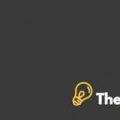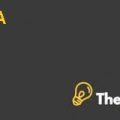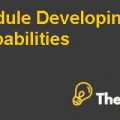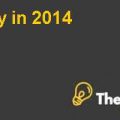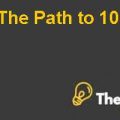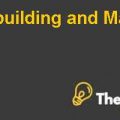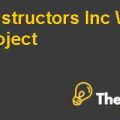
PILLSBURY: CUSTOMER DRIVEN REENGINEERING
QUESTION 1: What are the implications of customer-focused reengineering to Pillsbury? What are the issues that Debrowski must manage?
ANSWER:
At the time of the launch of the customer-focused reengineering at Pillsbury, Robert Slocumb, who was the technical services director and Dan Crowley, who was the controller of the Green Giant, both of these took a proposal of business reengineering to the CEO of the company, Paul Walsh. This proposal highlighted the facts, characteristics and the implications of customer-driven reengineering of 20 reengineering projects, which have achieved significant cost savings of about 13-22% in total. After the review of the proposal the CEO asked both of these personnel to prepare a business case for the reengineering at Pillsbury. The business case was to focus on about $300m cost reductions, which was about 15% altogether. The business case was prepared in Phase 1 of the reengineering process and the Phase 2 focused on determining whether the business case prepared was realistic and feasible.
After the initial meeting was over, Slocumb commented that the Integration Committee felt betrayed by their proposal. They had signed just for $100m project, which would reduce costs around 5% of the total Customer Supply chain cost base, however, their target was to meet up to cost reductions of around $300m which constituted around 13-22% of the customer supply chain cost base. Now the implications of the customer driven reengineering which was prepared in the business case was that if Pillsbury achieves $100m cost reductions, it would certainly benefit the organization but it would not be considered as a redesign of the company. The company needs to redesign complete processes that link the company’s products to its customers. If the company redesigns its complete supply chain it could create improvements in its value chain and further cost improvements could be achieved through transportation, total quality management, continuous improvement, minimizing waste and inefficiency from the production processes.
When the first half of the customer supply chain cost reduction will be implemented it would require more accurate measurement of costs and profits. A method of activity based costing will have to be adopted to identify the relevant cost drivers that drive the costs according to the activities they consume. The ABC method will calculate the costs for the entire processes of the business. Another important implication of this whole reengineering and redesigning process would be to maintain good relationships with suppliers and also with the distribution companies.
Tom Debrowski who is the Senior Vice president of Operations and Chairman of the Integration Committee, needs to focus on how to redefine the entire processes and not just the customer supply chain cost base. He needs to now come up with a plan to achieve the $300m cost reduction target. He needs to develop a plan to create value for the customers. The company needs to focus more on the branded food products and add value to it. The company needs to come up with a plan to minimize waste, duplication of processes and eliminating inefficiency.
Debrowski also needs to change the culture of the organization and make its organization more customer-oriented and new information systems should be implemented that tells about the demographics of the customers of how they buy their products and what choices they make, what factors they consider during the purchase. Debrowski needs to manage these all issues and prepare the complete reengineering process so that the desired goals of quality improvement, cost reductions and value creation could be achieved.
QUESTION 2: What role does Activity based Costing and performance measurement play in Pillsbury’s supply chain reengineering initiatives?
ANSWER:
The concept of Activity based costing was introduced at Pillsbury for the first time by Dan Crowley, who was the controller at Green Giant. There was a need to re-examine the cost structure of the complete organization. When the activity based costing method was introduced at Pillsbury, it revealed that the actual costs were far higher than the standard costs established. Excess capacity was also identified, particularly in the plants, of which about half-dozen plants were closed by the management and the operations of the remaining plants were consolidated so that the business performs more efficiently. The ABC methods also provided insights into relationships between the profit margins and volumes according to each product line. The ABC method revealed the relevant cost drivers driving the costs of the organization. The project team also made a cumulative margin by SKU whale curve, which identified collectively which product lines were being sold at profit/loss and which products were breaking-even. The ABC method also revealed that there were also variations in the cake mixes which was unprofitable because it required packaging inserts and special colors. After the introduction of ABC and performing the ABC analysis, it was becoming clear that product complexity, SKU proliferation and the impact of volume on cost mainly the fixed costs washed ....................
This is just a sample partial case solution. Please place the order on the website to order your own originally done case solution.
Pillsbury is transformed from an integrated manufacturer of flour and bakery products to value-added supplier of premium branded products. After initial successes, the use of activity-based costing for manufacturing operations, two senior leaders decided to work together to offer a major reengineering project for the entire value chain of the company. The case describes the definition and scope of the project, getting the projected annual cost savings and margin improvements of between $ 100 and $ 300 million. "Hide
by Robert S. Kaplan Source: Harvard Business School 28 pages. Publication date: April 12, 1995. Prod. #: 195144-PDF-ENG

